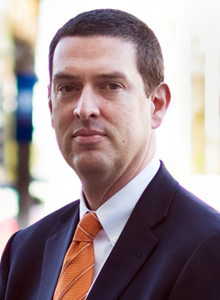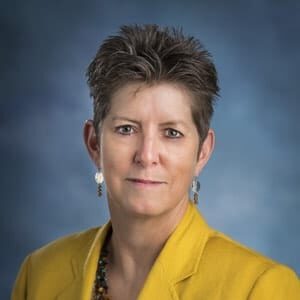Who says higher education can’t change with dispatch? When the coronavirus hit in the spring of 2020, thousands of colleges and universities pivoted quickly from the centuries-old paradigm of face-to-face classroom instruction to remote teaching online.
Some prognosticators have been quick to tout this remarkable metamorphosis as a tipping point for the acceptance and wider use of online learning. There may be some truth in that, but much more work is needed to fully inculcate online learning across the academy.
Keeping the business running

In the wake of higher education’s plunge into remote teaching, one essential truth is that scaling remote instruction is not the same as scaling online learning. The remote education that colleges and universities have embraced so fully “does not resemble in any way, shape, or form what we think of for online education,” says Joshua Kim, director of online programs and strategy at Dartmouth College and a senior scholar at Georgetown University.
Simply transitioning existing courses to remote instruction does not reflect the investment of time and resources that typically go into curricular development for the best, fully-realized online courses, Kim says, nor does most remote instruction completely reflect the applications of learning science that inform and enrich the best online pedagogy.

“The spring was all about shifting everything into the virtual space,” says Christopher Swarat, the associate vice president for extension and international programs at California State University, Fullerton. “I say virtual rather than online because most of it was synchronous, Zoom-based, just simply a replacement of what the in-person experience was. It wasn’t an attempt to build out a robust, online educational ecosystem at scale. It was simply trying to keep the business running, to continue to support our students.”
Still, even if remote teaching is not tantamount to fully realized online learning, the plunge into remote instruction has helped nudge many colleges and universities in that direction. At Georgia State University, for example, the pandemic came while the university was already planning a broad initiative in online education. One effect of moving essentially the entire curriculum to remote instruction, says Kim L. Siegenthaler, associate provost for online strategies, is that “now a lot of academic departments feel much better prepared to offer an online version of their programs than they would have a year ago or even six months ago. That’s going to enable us to accelerate our portfolio of online programs.”
The pandemic also provided unexpected financial incentives. As one example, Swarat says his unit had previously struggled a bit “to figure out how to invest at a high level” to expand its online programmatic offerings. The pandemic, he notes, forced the unit to resource online instruction in unanticipated ways, which Swarat says “has pushed us forward in a way that we would not have been able to accomplish through just standard investment practices.”
Yet another benefit—and one that is particularly critical for advancing online learning—is that the experience with remote instruction has helped more faculty develop a deeper facility with the tools of online instruction and perhaps a deeper appreciation for the pedagogical potential of online learning.

“There are a lot more faculty who see that you can teach a course at a distance and it can be a really good experience,” says Monique LaRocque, associate provost for the Division of Lifelong Learning at the University of Maine. “I think it’s brought more faculty into considering the development of fully online courses.”
The pivot to remote instruction has also expanded access to learning for diverse students. Swarat, for example, says the pandemic created “a window of opportunity” for Cal State Fullerton, which serves 40,000 students in a physical plant designed for far fewer learners, to develop better ways to serve students “who don’t always have easy access to the physical infrastructure of the campus.”
Another plus, Swarat says, is that the pivot to more learning delivered online also helps an institution like Cal State Fullerton improve its capacity to meet employers’ need for programs attuned to workplace needs for given skills.
“I think what we will see, at least what I hope we see, is to not supplant in-person education with online and virtual opportunities,” Swarat says, “but instead to expand the number of modalities available to increase access to an ever-increasing student population with very high workforce-development-related demands that can’t be achieved through single channels of education or availability alone.”
Building on remote instruction
Going forward, the mass pivot to remote instruction can do much to help inform institutional strategies to meet goals for more comprehensive online learning. To support such a journey, cultural change and the learning of new behaviors may be required.


The need for reform on that level was underscored by the pain that many institutions experienced in migrating to remote instruction. Instructional designer Flower Darby—the author, with James M. Lang, of Small Teaching Online: Applying Learning Science in Online Classes—put that in perspective. “I don’t think it’s an overgeneralization to say that there has been a steep, and in many times uncomfortable, learning curve going on over the last several months,” Darby says.
“Many colleges had neglected to embrace the opportunity to really dive into online education. At many colleges, there was very little if any online teaching and learning. Even at colleges that had fairly robust programs, there were still large percentages of faculty teaching in person who really had not ever even gone into the learning management system or who used it only in very bare bones kinds of ways.” Changing those habits and creating richer online offerings will mean that many institutions will need to be more intentional about how to make that happen.

One key task will be reshaping the curriculum. It’s not enough to simply migrate existing courses to remote teaching. Writing recently in EdSurge, Debora Spar, senior associate dean of Harvard Business School Online, said that for higher education “our job will be to construct entirely new pedagogies and curricula, designing them from the outset to be delivered digitally, and across a more varied set of learners.”
Critically, Spar says, higher education needs to “harness the power of digital technologies to imagine something better; something that breaks the strangleholds of physical capacity and high fixed costs to deliver education that is affordable, accessible and intellectually exciting.”
It will also be critical to educate faculty about the theories and tools of online learning and perhaps disabuse them of related preconceptions. LaRocque, for example, cautions that some faculty members who have never taught an online course before but are now engaged in online instruction “may be considering what they’re doing remotely as online and therefore may think that they have it figured out and that they know how best to deliver content to students at a distance.”
It’s up to institutions, she says, to help faculty understand that “online learning is intentional in its design and that it’s designed as an online experience from the very beginning.”
Rethinking reward systems
Darby urges institutions “to create more time, incentives, rewards, recognition and space for faculty to meaningfully learn how to teach online.” In that regard, for example, Georgia State recently invested heavily in a four-week program developed by its Center for Excellence in Teaching & Learning called “Mastering Online Teaching.” As many as 3,000 faculty members and graduate teaching assistants took the course.

That experience may not ensure the complete mastery of online teaching and learning, Siegenthaler acknowledges, but nonetheless it helped participants “become more familiar and comfortable in the online environment and with best practices around online teaching and learning.”
Some of the onus will be on faculty members to step up to the challenges of online pedagogy. “I would encourage faculty to embrace the opportunity that we have had forced upon us by the pandemic to radically rethink instructional practices that we’ve relied on for years,” Darby says. Apart from rethinking their own teaching habits, Darby says, faculty need to become more well versed in the capacities of their institution’s learning management system.
Institutions may also have to invest in staff to support faculty and administrators in developing digital learning ecosystems. This year alone, for example, Georgia State is hiring nearly 30 additional instructional designers, multimedia designers and instructional technologists as part of its online education initiative. Saying that such staff do essential work that is often under-appreciated, Darby believes that institutions need to do more to recognize the value that they add.
Institutions will need to pony up the financial means to develop robust online ecosystems. “For administrators, it’s about making sure that you’re committing the resources,” Siegenthaler says. “You’ve got to invest in the technology and the training for your faculty.” Moreover, she says, institutions have to be realistic about how fast they can progress: “You can’t expect zero to 60 in terms of going from face-to-face to online.”
One of the intrinsic values of online learning is in its capacity to provide wider access to higher education. Thus, while institutions pay attention to the many dimensions of building a successful digital learning ecosystem, intentionality will also be needed to make sure that such programs serve as wide a swath of students as possible.
Summarizing that imperative, Darby says “I would make a strong call to ensure that we are also thinking about equitable and inclusive practices in order to support all our students and promote social mobility through the equal opportunity to earn a college degree.”
Highlighting the role of professional, continuing and online education
Online learning has an especially large role to play in professional and continuing education. The pandemic has driven many individuals to seek new jobs, to rethink the future trajectory of their careers or to focus on skills they need to succeed in their current professional lives. Each of those scenarios will drive more demand for upskilling and reskilling, even on top of the demand for ongoing skills development that currently exists among employers.
“For continuing education and professional learning, it’s going to be crucial to provide effective online courses and certifications and micro-credentials that are well-designed” and that serve current and future workforce needs, Darby says.
Swarat says the development of rich online learning ecosystems can help institutions live up to the promise, first framed by the American Association of State Colleges and Universities, that universities add value to life in their regions as “stewards of place.” Professional and continuing education professionals have a key role to play in this work, he believes.
“Professional and continuing education should be guiding that, but guiding it through collaboration and understanding, set forth by our community partners,” Swarat says. “Now is the time for us to step forward and serve in that role.”
Stephen G. Pelletier ([email protected]) is an independent writer and editor who writes frequently about higher education. Prior to starting his full-time freelance practice in 2006, he served for many years as vice president for communications at the Council of Independent Colleges, directed the publications program at NASFA: Association of International Educators, and edited the magazine at the Howard Hughes Medical Institute.

